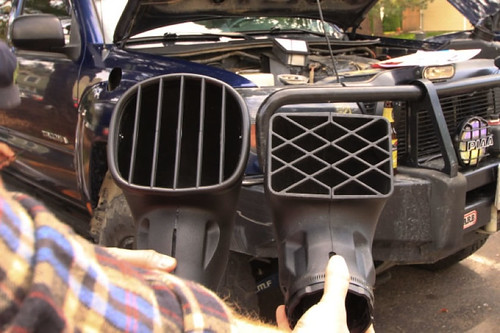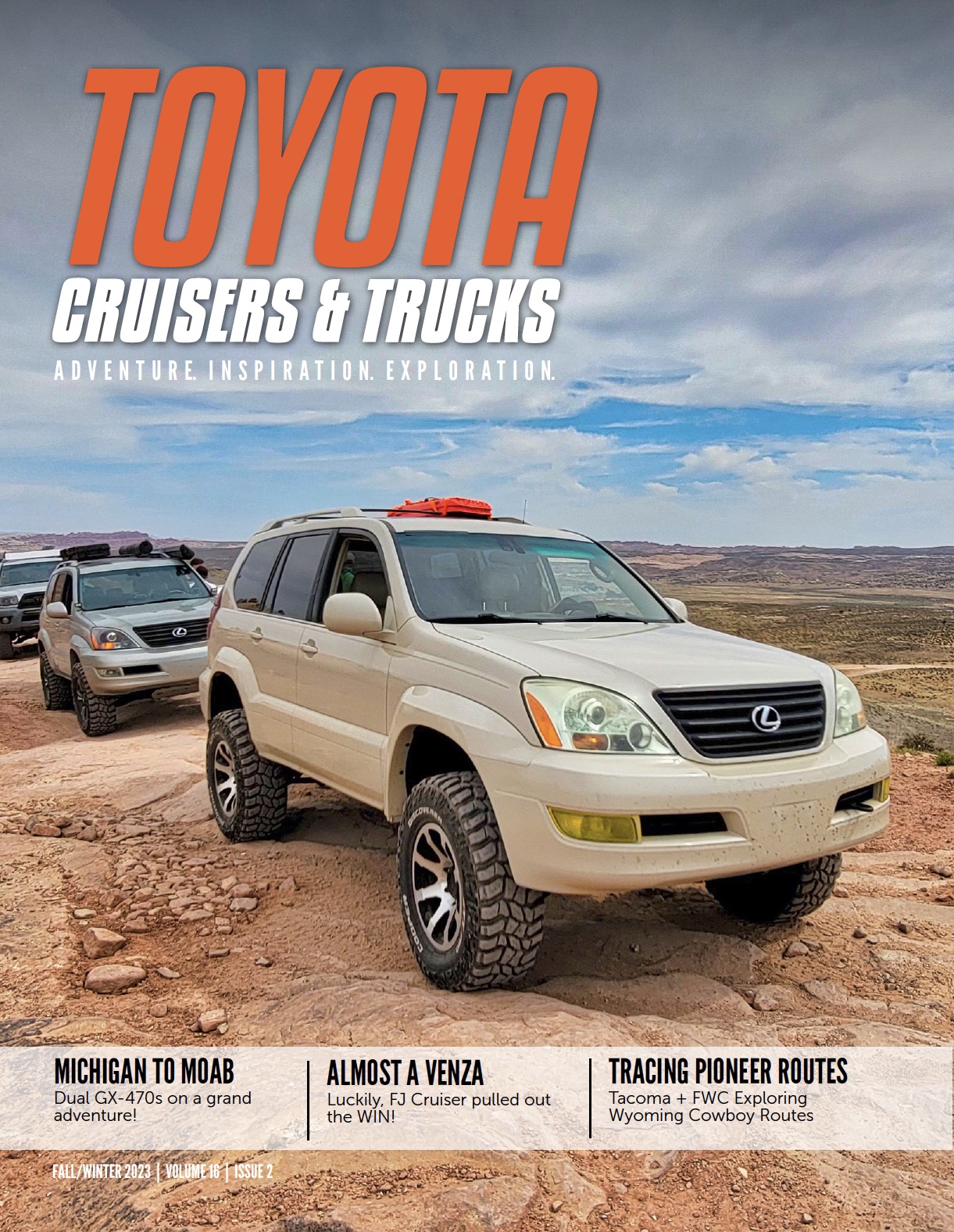In the February 2011 Tacoma Magazine article Safari Snorkel Tech From The Pro’s, Kurt Williams discussed many benefits of a snorkel installation with off-road vehicles. Between keeping water and dust out of your engine and bringing in fresh cool air from outside into your engine (in most cases, intake temperatures can range from zero and 15 degrees higher than the ambient temperatures versus 5 and 30+ degrees as seen with the factory intake), off-road vehicles can benefit greatly from this modification. A vehicle can also see gains in both fuel economy as well as some performance gains from the forced air designs of snorkels. In some cases, fuel economy has been seen to improve by two or more miles per gallon. For most situations snorkels are not a necessity, however, for those who like to spend time crossing through water, or traveling across dusty terrain, snorkels are a great option.
Although the concept of a snorkel is similar with all manufactures, their methods to obtaining the air can vary. These differences can be seen between Safari and the new contender, Airflow. The most notable difference being the air ram styling between the two manufacturers. Safari’s air ram measures 5.5”x3.75” while the Airflow air ram measures a massive 6.75”x6.5”. Additionally, the Airflow kit extends the air ram slightly higher compared to the Safari with a goal of pulling in air at the roof level where it is least disturbed. Airflow chose to increase the plumbing size from the air ram to the intake as well compared to the Safari system using 3.5” and 4” tubing, similar size to that of the factory Tacoma intake system. With years of research and development, the Airflow America has been working hard to maximize the volume of air your engine receives. This is good news for those with forced air induction systems looking for a snorkel but worried about starving your engine. However, without proper testing between the different methods, we cannot say whether one system performs better than the other.
Although there are differences in the size and shape of the air ram, both “hats” contain water separation systems that allow water and heavier particles to be ejected by centrifugal forces out the side of the air ram through vertical ribs in the hat. The finer particles that continue through the snorkel intake will need to be filtered out through pre-filters and/or normal engine air filters.
As far as the installation process between the two systems, there are many similarities and few differences. Both require some confidence to make some drastic alterations to the truck’s body (drilling and cutting to fit the snorkel) and both utilize all or some of the main factory intake system. The Airflow system, however, has been able to utilize all of the factory intake system making the connection between the snorkel and the intake a breeze. Meanwhile, the Safari system requires a bit more creativity to connect the two systems seamlessly.
As mentioned in Safari Snorkel Tech From The Pro’s, installing a snorkel will not protect your vehicle completely in the instances of water crossing and further work is necessary to fully protect other critical areas of your vehicle. Refer to the February 2011 Tacoma Magazine for more information on useful tips to protect your vehicle.
Visit http://www.airflowamerica.com/ to discover more about the Airflow America line of snorkels and to find information for your local authorized Aifrlow dealer.
Special thanks to Expeditioneers for their help with the installation and testing opportunity.
Remember, tell your friends! They can subscribe for FREE using this link!
{fcomment}

 Looking for a snorkel specifically designed for your second generation Toyota Tacoma? Look no further! Airflow America, the North and South America distributor for Airflow Vector Pty Ltd from Australia is set to release their latest creation, a snorkel molded directly from the second generation Toyota Tacoma. Airflow has leveraged 20+ years of experience in designing and making snorkels to create a snorkel that fits the Tacoma’s contours and engine specifications, supplying the right amount of airflow needed throughout the power band. The snorkel has been put through several computer simulations to improve results and field tested throughout the United States for close to two year before their official release at the end of December 2012.
Looking for a snorkel specifically designed for your second generation Toyota Tacoma? Look no further! Airflow America, the North and South America distributor for Airflow Vector Pty Ltd from Australia is set to release their latest creation, a snorkel molded directly from the second generation Toyota Tacoma. Airflow has leveraged 20+ years of experience in designing and making snorkels to create a snorkel that fits the Tacoma’s contours and engine specifications, supplying the right amount of airflow needed throughout the power band. The snorkel has been put through several computer simulations to improve results and field tested throughout the United States for close to two year before their official release at the end of December 2012.









